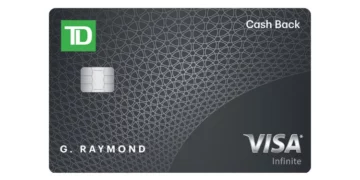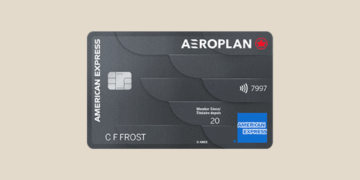How to Choose the Ideal Credit Card for Your Financial Needs

Understanding Your Credit Card Options in Canada
Navigating the world of credit cards can often feel overwhelming, especially in a diverse market like Canada. With numerous options available, understanding the different types of credit cards and their features is essential for making informed decisions that align with your personal financial goals. Below, we delve into some critical factors to consider when selecting a credit card.
Rewards Programs
Rewards programs are one of the most enticing features of various credit cards. Many Canadian credit cards offer rewards in the form of cash back, travel points, or discounts on everyday purchases. For instance, a cash back card might give you 1.5% back on all purchases, which can add up significantly over time. Travel enthusiasts might prefer a card that allows them to earn Aeroplan or WestJet dollars to redeem for flights or hotel stays.
Additionally, certain cards are tailored to specific spending categories, such as grocery shopping or gas purchases. For example, the PC Financial World Elite Mastercard offers exceptional rewards on grocery spending, making it suitable for families or frequent shoppers. Always read the fine print to understand how and when you earn points or cash back, as well as any limits that may apply.
Interest Rates
Understanding interest rates is another critical aspect of credit cards. The Annual Percentage Rate (APR) is a significant factor to consider, as it represents the cost of borrowing. If you carry a balance from month to month, a card with a high APR could lead to substantial interest charges over time. In Canada, average APRs can range from about 19.99% to over 29.99%, particularly for rewards-oriented cards. Researching and comparing rates can save you money in the long run, especially if you anticipate making purchases that you’ll pay off over several months.
Annual Fees
Some credit cards come with annual fees, which can vary widely depending on the card’s features. While some cards charge no annual fee, others may have fees upwards of $200. It’s crucial to weigh these fees against the benefits offered, including rewards, insurance, or access to airport lounges. For instance, if a premium travel card offers substantial rewards and travel insurance, it may justify the annual fee, especially for frequent travelers.
Credit Limit
When choosing a card, consider the credit limit. Opting for a credit limit that aligns with your spending habits is essential for financial health. Ideally, aim for a limit that allows for flexibility without exceeding 30% of your overall credit utilization. This practice helps maintain a healthy credit score while giving you the ability to make larger purchases if necessary.
Finding the Right Fit
Your choice of credit card should be driven by your personal financial needs. Are you looking for everyday rewards, low-interest options, or something to enhance your travel experiences? Different cards cater to different financial behaviors, so identifying your spending patterns and financial objectives is fundamental to finding the right fit. By analyzing your monthly expenses and understanding where you spend the most, you can pinpoint the card that meets your requirements effectively.
Ultimately, the right credit card can enhance your lifestyle, providing benefits that not only make your purchases more rewarding but also contribute positively to your overall financial health. By exploring your options and understanding the nuances of each card, you’re empowered to make choices that suit your unique circumstances, paving the way for better financial management and greater rewards.
DISCOVER MORE: Click here to learn how to apply
Evaluating Your Financial Lifestyle
Choosing the ideal credit card isn’t just about the features; it’s about understanding your own financial lifestyle and aligning it with the right card. It’s essential to take a close look at your spending habits, lifestyle, and long-term financial goals to make an informed choice. Here are some key considerations to help you evaluate your situation:
Assessing Your Spending Habits
The first step in finding the right credit card is to conduct a detailed assessment of your spending habits. Review your monthly expenses and categorize them. Consider spending in areas such as:
- Groceries
- Dining and entertainment
- Fuel and transportation
- Travel expenses
- Online purchases
This analysis provides insight into where you spend the most and can lead you to the credit card categories that offer the best rewards or benefits. For example, if you frequently dine out, a card with enhanced rewards for dining could maximize your benefits, turning routine spending into rewards.
Identifying Financial Goals
Next, it’s vital to consider your financial goals. Are you looking to build credit, earn rewards, or manage existing debt? Your objectives will shape your decision significantly. Some common financial goals include:
- Building or improving credit score
- Minimizing interest on debt
- Maximizing rewards for travel or cash back
- Using credit for emergency purposes
For example, if you’re focused on improving your credit score, a card with a lower interest rate and no annual fee may be more suitable. Conversely, if you frequently travel, consider a travel rewards card that provides points or miles for your journeys.
Importance of Credit Score
Your credit score plays a crucial role in determining the credit card options available to you. In Canada, credit scores typically range from 300 to 900, with scores above 660 generally considered good. Higher scores can lead to better terms, lower interest rates, and access to premium cards with lucrative rewards. Before applying, check your credit score to understand where you stand and which cards you may qualify for.
Moreover, taking steps to improve your credit score, such as making payments on time and reducing debt, can unlock better credit card offers in the future, providing even greater financial benefits.
Examining Additional Features
Lastly, consider any additional features that might enhance your credit card experience. This could include:
- Insurance coverage for travel delays or cancellations
- Purchase protection against theft or loss of items
- Access to exclusive events or concierge services
These features might provide added value, making a particular card stand out as the perfect option for your needs. Evaluating these extra benefits alongside core features—such as interest rates and annual fees—can help paint a complete picture of what each card offers.
By critically examining your spending habits, financial goals, credit score, and additional features, you set the stage for finding the credit card that perfectly matches your financial needs. This thoughtful approach will empower you to make a choice that contributes positively to your financial well-being.
DISCOVER MORE: Click here for detailed application tips
Understanding Card Fees and Limitations
Once you have a solid grasp of your spending habits and financial goals, the next crucial step in choosing the ideal credit card is to analyze the fees and limitations that come with potential card options. Credit cards can carry various fees, and understanding these charges can significantly influence your overall financial health.
Types of Fees
Credit cards often have multiple types of fees associated with them. Some common fees to be aware of include:
- Annual Fees: Some cards charge an annual fee, which can range from $0 to more than $500 for premium cards. Determine if the benefits offered justify the cost.
- Late Payment Fees: Pay attention to fees incurred from missed or late payments. These can add up quickly, especially for cards with high interest rates.
- Foreign Transaction Fees: If you travel outside Canada or make purchases from international merchants, be mindful of foreign transaction fees that can impose an additional 2.5% to 3% on your purchases.
- Cash Advance Fees: Using your credit card for cash withdrawals typically comes with a fee and higher interest rates, so it’s best to avoid this unless absolutely necessary.
Understanding these fees will help you identify cards that align with your financial habits, saving you money in the long run.
CREDIT LIMITS AND INTEREST RATES
Another critical component to factor into your decision-making process is the credit limit and interest rates. Credit limits vary widely among cards and can affect your spending capacity and credit utilization ratio. Higher limits enable greater financial flexibility, but they also necessitate responsible spending to avoid falling into debt.
Additionally, the interest rate, known as the Annual Percentage Rate (APR), varies from card to card. If you plan on carrying a balance, look for cards with the lowest possible interest rates to minimize costs. Consider that introductory APRs may be lower for a limited time before returning to a higher standard rate, so always read the fine print.
Reward Programs and Loyalty Benefits
If rewards are a priority for you, dive deeper into the reward programs offered by different cards. Some cards provide valuable benefits like travel insurance, cashback on everyday purchases, or points redeemable for goods and services. It’s wise to analyze not only the rewards structure but also the redemption options. For instance, some travel rewards cards offer attractive points per dollar spent but limit flights or redemption opportunities.
Additionally, take the time to investigate if these rewards have expiration dates or restrictions. In Canada, several credit issuers partner with airlines or hotel chains, so knowing how to utilize these partnerships effectively can enhance your travel experience or provide savings during everyday purchases.
Comparing Card Features
As you narrow down your options, it’s beneficial to create a comparison chart listing key features of the cards you’re considering. Capture elements such as:
- Type of card (cashback, travel, low-interest)
- Fees (annual and other associated fees)
- Interest rates
- Sign-up bonuses
- Reward structures and redemption methods
A side-by-side comparison will allow you to highlight the best options that meet your distinct financial needs. With an abundance of options available in the Canadian credit card market, taking the time to assess features, fees, and rewards all combines into making an educated decision that will foster your financial growth.
DISCOVER MORE: Click here for the application guide
Final Thoughts
In conclusion, selecting the right credit card is a pivotal decision that can significantly influence your financial journey. By taking the time to thoroughly understand your spending habits, lifestyle preferences, and financial goals, you can tailor your credit card choice to align with your unique needs. Remember to meticulously analyze associated fees—such as annual fees, late payment charges, and foreign transaction fees—as they can quickly add up and detract from the benefits you hoped to gain.
Equally important is the assessment of credit limits and interest rates. Make sure you opt for a card that offers a manageable interest rate, especially if you anticipate carrying a balance. The financial flexibility of a higher credit limit can be advantageous, but it calls for disciplined spending and repayment practices.
The allure of reward programs and loyalty benefits should not be overlooked. Evaluate the rewards structure carefully, ensuring that it complements your lifestyle and spending patterns. Whether you seek cashback, travel points, or other perks, ensuring that you maximize the value of rewards can enhance your overall financial experience.
Lastly, creating a thorough comparison chart is a strategic way to visualize your options. This will help you make an informed choice among the multitude of credit cards available in the Canadian market.
Ultimately, the right credit card will not only serve your immediate spending needs but will also contribute positively to your long-term financial health. By following these guidelines and staying proactive in managing your finances, you can pave the way to achieving your financial aspirations.

Linda Carter is a writer and financial expert specializing in personal finance and investments. With extensive experience helping individuals achieve financial stability and make informed decisions, Linda shares her knowledge on the Territorio Deficiente platform. Her goal is to provide readers with practical advice and strategies for financial success and smart investments.





